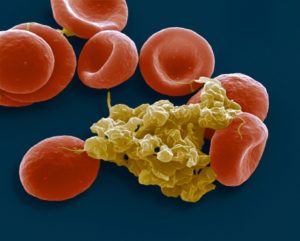Pathogen reduction technologies (PRTs) for platelets inactivate known and unknown viruses, bacteria, and parasites in addition to inactivating white blood cells. However, the hemostatic efficacy of PRT treated platelets is not clear. To this end, researchers conducted a randomized noninferiority trial over 6 years at 10 institutions in Canada, the Netherlands and Norway. During the trial, 469 patients with 567 transfusion-treatment periods were randomized to receive either Mirasol-inactivated platelets (N=284) or platelets prepared from whole blood by the standard buffy coat method (N=283). Based on an intention to treat analysis, PRT treated platelets were noninferior in preventing grade 2 or higher bleeding (55% versus 51% in the PRT and control arms, respectively; P=0.012 for noninferiority). Noninferiority, however, was not met in a per-protocol analysis when patients were excluded if they bled before the first study transfusion, they did not receive any transfusions, or they received >25% off-site transfusions (N=425 transfusion-treatment periods); 52% and 44% of patients had grade 2 or higher bleeding in the PRT and control arms, respectively (P=0.19 for noninferiority). There was no difference in alloimmunization; 7 patients in the PRT arm and 6 patients in the control arm developed HLA class I alloantibodies (RR 1.00; 95% CI, 0.34-2.98; P=1.00). Further research is warranted on the efficacy of PRT as well as the cost effectiveness of the technology.
Reference:

